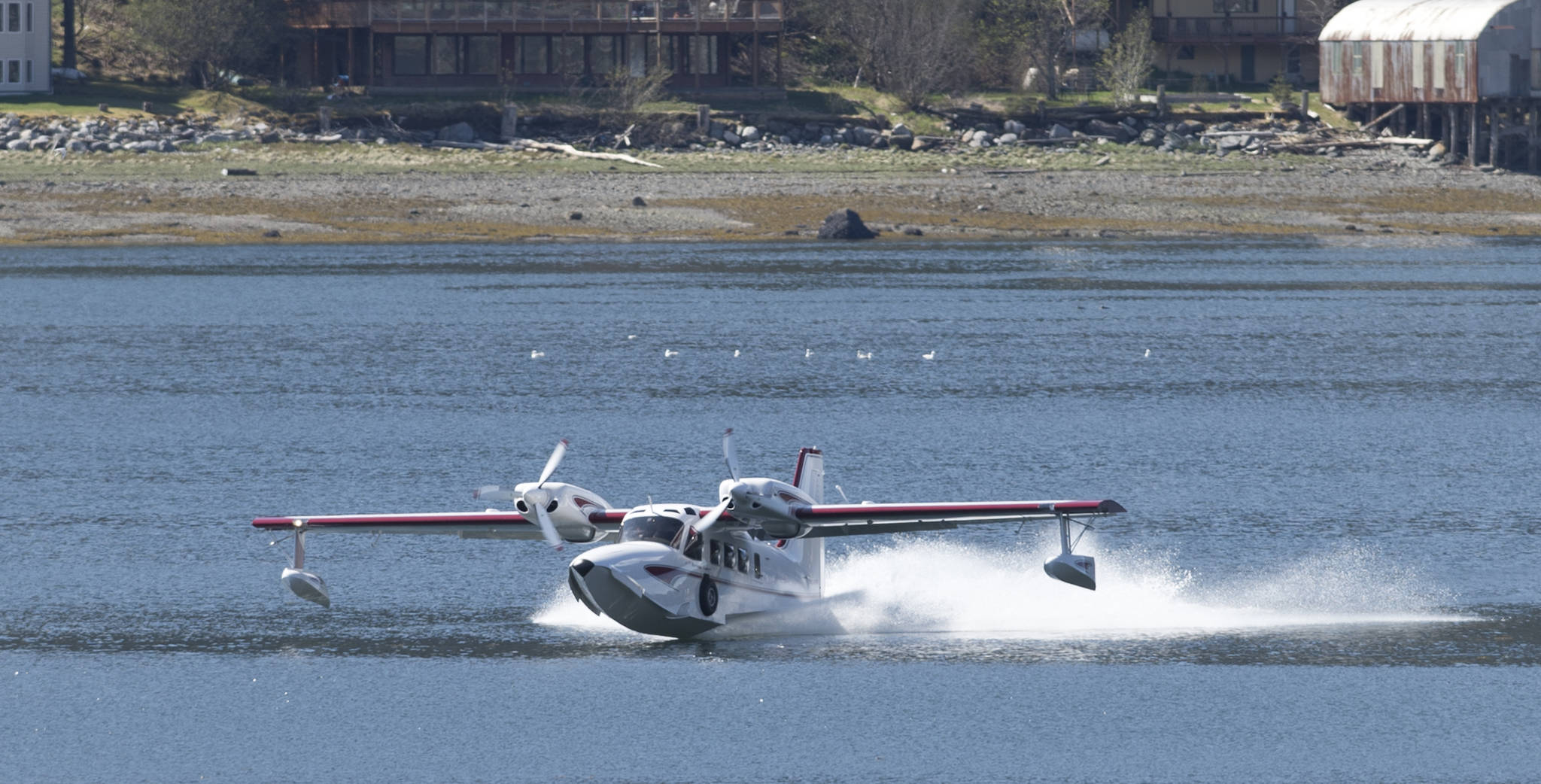A twin-engine piece of nostalgia touched down in Juneau on Thursday.
Two decades ago, Seattle aeronautical engineers Ben Ellison and Ross Mahon began to design a plane that honored the form of a vintage seaplane while using modern materials. Now, that plane — dubbed a “Gweduck,” jokingly named after a saltwater clam — is a reality, and is flying from Seattle to Anchorage.
Standing next to the plane as it rested on the runway at the Juneau International Airport on Thursday, pilot and friend of the designers Karen Stemwell recounted the history of the aircraft.
“One thing led to another,” Stemwell said. “They kept going one step at a time, halfway thinking it might be a reality, but it could end at any point, and 15 years later, they had the airplane sitting on the Tarmac.”
The Gweduck has created a stir among aviation enthusiasts, because of its nod to aircraft history and its innovative design. The plane’s design is akin to a Grumman Widgeon, a seaplane that was popular in the years following World War II. The aircraft was especially beloved in Southeast Alaska, where seaplanes are used frequently to hop from island to island.
News of Ellison and Mahon’s project spread quickly among pilots and aviation experts, and many have joined the movement. Whether they’ve helped test the equipment, help with the design or order parts to the plane, people from all over the Northwest have found ways to get involved.
Burke Mees, who is currently a pilot for Alaskan Airlines, used to fly Grummans in Southeast Alaska, and jumped at the opportunity to join the group that was putting this plane together.
“It’s just a part of aviation history that’s kind of come and gone at this point,” Mees said. “These guys have copied the basic Grumman design, but they’ve used all new materials. … They’ve incorporated a lot of advances in seaplane design into this. They’ve kind of updated the traditional Grumman design.”
Perhaps the most impressive twist in the design is the fact that the airframe (basically the outer shell) doesn’t corrode in saltwater. The vast majority of seaplane pilots face a never-ending battle against corrosion, but the Gweduck won’t have that problem. Both Mees and Stemwell pointed out that the corrosion-free aspect of the plane is noteworthy.
The name is also a bit noteworthy, as it’s meant to be a bit of a joke about the usual names of seaplanes. Traditionally, seaplanes are named after water birds, such as the Widgeon or the Grumman Albatross, and someone involved with this project suggested that they name it after a geoduck, which is an edible and objectively unattractive saltwater clam.
“It’s kind of a shame to name a really slick, elegant new seaplane after a mud-dwelling clam,” Mees said, “but that was kind of the inside joke to that.”
The Gweduck, piloted Thursday by Mahon, is making a bit of a tour through Southeast Alaska now, and put on a show in the Gastineau Channel by downtown Juneau on Thursday. With the backdrop of bright blue skies, the white plane circled the city and made a splash-landing in the channel.
The plane seats six, and included Mahon, Mees, Stemwell and others Thursday. Among the passengers on the fairly roomy plane was Walter Fellows, who is a kit plane partner who helped manufacture the plane. Fellows explained that beyond the nostalgia, the Gweduck is actually a practical and useful craft. The current plane is the only one yet produced, but there will be more in the coming years. Fellows said people have already been clamoring for it, for various reasons.
“Some people want to use it as sort of an adventure camper,” Fellows said. “It’s big enough that you could sleep a couple people back there. Some people want to use it for fishing and hunting. If you have a home on the water somewhere and not much in the way of roads, you need a big useful load to bring family, food and everything else.”
The success of the craft is fairly astounding to those in the development group. Mees laughed frequently as he talked about the unlikeliness of this plane becoming a reality, especially considering that it started as somewhat of a pet project done in Ellison and Mahon’s spare time.
“It’s kind of the American tradition of a backyard project, almost,” Mees said, “but there’s nothing amateur about it.”
• Contact reporter Alex McCarthy at alex.mccarthy@juneauempire.com or 523-2271.

